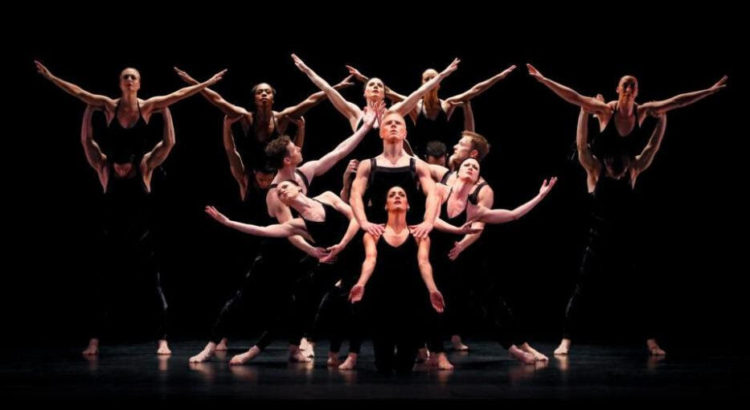Though it was not a traditional performance, UMS’s online presentation of Paul Taylor: Celebrate the Dancemaker was nonetheless something special. Near-equal parts dialogue and archival footage, it featured University of Michigan dance historian and educator Angela Kane and Paul Taylor Dance Company Artistic Director Michael Novak in conversation about the works of modern dance choreographer Paul Taylor, as well as the history of the dance company he founded. Because it was a presentation specifically for UMS audiences, Paul Taylor: Celebrate the Dancemaker was also able to provide a sense of local community, despite being an asynchronously viewed video.
One of the best parts of the event was the insight that it offered into Paul Taylor’s wide-ranging and ground-breaking career. Taylor’s experiences as a painter and a collegiate swimmer informed his understanding of depth and movement onstage. Expanding the boundaries of modern dance at the time, he was also one of the first artists to employ a year-round, full-time dance company. After opening with a rapid-fire montage of selections from Paul Taylor’s 147 works, the video featured Novak and Kane discussing some of Taylor’s most monumental works, and then showing excerpts of them.
The first work explored during the presentation was Taylor’s 1962 work Aureole, which challenged the notion that modern dance was limited to “modern music and weighty meanings.” In fact, Aureole was a lyrical, flowing, light work that, in the grainy black-and-white original film of Paul Taylor and Liz Walton, appeared to be almost be a modern impression of a classical ballet.
Then, Kane and Novak introduced audiences to Aureole’s opposite, Scudorama (1963). Lyricism was replaced with sharp angles, jarring rhythms, and a weighty, almost apocalyptic feel. Given the immediately apparent contrast between these two works, it is no surprise that Michael Novak referred to Taylor as the “master of light and dark.”
If the previous two works illustrated Taylor’s artist range, the next work featured, Le Sacre du Printemps (the Rehearsal), illustrated his artistic genius. A hyper-stylization of Igor Stravinsky’s (notoriously controversial in 190) ballet Le Sacre du Printemps, or The Rite of Spring, Taylor’s work challenges audiences to reexamine the original. Taylor’s work features a rehearsal for Stravinsky’s work inside of it, along with a plot line that closely mirrors that of the original ballet (which reminded me of the musical Kiss Me Kate, which does the same with Shakespeare’s play The Taming of the Shrew; also similar in its reimagination of an existing work is Max Richter’s work Vivaldi Recomposed).
After a short clip from the Academy Award-nominated documentary Dancemaker (1998), which offered a candid view of Taylor’s creative process, the presentation culminated in video of Taylor’s monumental work Promethean Fire (2002) in full. Like Aureole, the work juxtapositions modern dance with music that is decidedly not modern (In this case, it is Leopold Stokowski’s orchestral arrangement based on three of Bach’s keyboard pieces – the Toccata and Fugue in D minor, the Prelude in E-flat minor from Book I of The Well-Tempered Clavier, and the chorale prelude “Wir glauben all’ an einen Gott.” Chances are, you may recognize the beginning from the Toccata and Fugue in D minor). However, unlike Aureole’s quiet lyricism, Promethean Fire makes a much bolder statement: it is tense, fiery-seeming, and almost overwhelming during parts. In fact, it was the first and last time that Paul Taylor would utilize all sixteen dancers in the company in one work, on one stage. UMS calls Promethean Fire ”arguably one of his greatest artistic achievements created in the wake of 9/11, proclaiming that even after a cataclysmic event, the human spirit finds renewal and emerges triumphant.” For an audience in today’s landscape, however, the work felt timely, and was a fitting conclusion to an artistically informative presentation.


